Contents
考虑去韩国做整形手术——价格实惠的整形手术目的地
你知道吗?韩国是全球领先的美容整形目的地之一。韩国以其高质量的整形手术而闻名,许多人选择这个充满活力的国家来开启他们的蜕变之旅。
韩国的医疗体系以其先进的技术和高素质的专业人才而闻名。许多患者慕名而来,寻求从拉皮到隆胸等各种美容手术,同时享受韩国丰富的文化和热情好客的氛围。
本文将探索韩国精彩纷呈的美容整形外科领域,重点介绍现有的治疗类型、患者体验以及支持这些服务的现代医疗基础设施。无论您是正在考虑手术,还是仅仅好奇,都能在这里找到宝贵的见解。
主要见解一览
- 高质量护理:韩国以其技术精湛的外科医生和先进的设施而闻名。
- 多样化的程序:提供多种美容选择,以满足不同的需求。
- 患者体验:许多国际患者分享了他们旅途中的积极故事。
- 实惠的选择: 韩国整容手术价格实惠,让许多寻求手术的人都能接受。
- 丰富的文化:在接受治疗的同时享受当地文化。
韩国经济实惠的整形手术套餐
探索韩国美容整形外科套餐,我们汇集了来自可靠诊所的低价方案。这些套餐旨在为您提供优质的护理,且无需超出您的预算。浏览我们的列表,找到符合您需求和预算的完美套餐。
韩国整形手术费用
对于寻求改善容貌的人来说,韩国的整形手术是一个经济实惠的选择。平均而言,手术费用比美国低得多,通常低50%甚至更多。手术类型和材料等因素都会影响价格,但您可以期待高质量的护理。立即探索您的选择!
Cosmetic/Plastic Surgery Centers Cost Comparison in South Korea
| Provider | Procedure | Price |
|---|---|---|
| Banobagi Plastic Surgery Center | Nose Surgery Rhinoplasty, Cosmetic/Plastic Surgery | $4300 |
| Banobagi Plastic Surgery Center | Eyelid Surgery, Cosmetic/Plastic Surgery | $1640 |
| Banobagi Plastic Surgery Center | Face Lift, Cosmetic/Plastic Surgery | $7200 |
Cosmetic/Plastic Surgery Cost Comparison in South Korea
| Country | Procedure | Price |
|---|---|---|
| Australia | Neck Lift, Cosmetic/Plastic Surgery | $9373 |
| United States | Neck Lift, Cosmetic/Plastic Surgery | $7000 |
| United Kingdom | Neck Lift, Cosmetic/Plastic Surgery | $6299 |
| United States | Nose Surgery Rhinoplasty, Cosmetic/Plastic Surgery | $9500 |
| Australia | Tummy Tuck Surgery, Cosmetic/Plastic Surgery | $8000 |
韩国整形外科诊所
我们在韩国的合作诊所提供一系列美容整形手术服务,包括隆鼻和隆胸等手术。这些中心拥有经验丰富的医生和一流的医疗设施,为国际患者提供优质的护理。以下列出了一些最佳的美容整形诊所:
观看有关韩国整容手术的视频
探索韩国美容整形手术的实用视频。这些视频将帮助您了解更多关于手术过程、预期效果以及术后恢复的技巧。它们能让您做好准备,并了解手术的相关信息。观看以下视频,获取在治疗前、治疗中和治疗后对您有所帮助的见解。
韩国整形外科评论
在 Google 和 Trustpilot 上查看韩国美容整形手术的真实患者故事。这些评论能帮助您了解护理方案和预期效果!
关于韩国整形手术的常见问题
韩国最受欢迎的美容/整形手术有哪些?
韩国以其先进的美容/整形外科服务而闻名。一些最受欢迎的手术包括:
- 双眼皮手术:改善眼睛的外观。
- 鼻整形术:重塑鼻子,使其更加美观。
- 面部轮廓:重塑下颌线和下巴,使外观更加清晰。
- 隆胸:通过植入物来增大乳房的尺寸和形状。
- 皮肤治疗:包括激光疗法和填充剂等各种选择。
如何在韩国选择合适的美容/整形外科诊所?
选择合适的诊所对于获得成功的体验至关重要。请考虑以下因素:
- 认证:确保诊所获得相关卫生部门的认证。
- 外科医生的经验:研究外科医生的资历和经验。
- 患者评论:阅读以前患者的评价以评估满意度。
- 设施标准:检查诊所的清洁度和技术。
韩国美容/整形手术后的恢复时间通常为多久?
恢复时间因手术而异。一般来说:
- 小手术:例如填充物可能只需要几天时间。
- 大型手术:如隆鼻或隆胸手术可能需要 1-2 周。
- 后续护理:安排后续预约以监测康复情况非常重要。
为了获得最佳的康复体验,请始终遵循外科医生的建议。
在韩国寻求美容/整形手术是否存在语言障碍?
语言可能是一个障碍,但韩国许多诊所都接受国际患者。以下是一些需要考虑的事项:
- 翻译服务:许多诊所提供会说英语的工作人员或口译员。
- 通讯应用程序:使用翻译应用程序促进讨论。
- 预先咨询:考虑通过视频通话进行初步咨询以解决问题。
去韩国进行美容/整形手术之前我应该做哪些准备?
准备工作是确保体验顺畅的关键。以下是一些基本步骤:
- 医疗记录:收集并翻译必要的医疗文件。
- 旅行保险:确保您的保险涵盖国外的医疗程序。
- 术后护理计划:安排某人在康复期间协助。
美容/整形手术之旅的后勤和规划
在韩国进行美容/整形手术的规划涉及几个重要步骤。以下是一份实用指南,可帮助您做好准备。
旅行前必备品
- 检查护照有效期:确保您的护照在您返回日期后至少六个月内有效。
- 签证要求:请根据您的国籍确认签证需求。请务必查阅政府官方信息。
- 收集医疗文件:收集并翻译您的手术所需的任何医疗记录。
旅行安排
- 预订航班:考虑灵活的机票并权衡直飞航班和转机航班的利弊。
- 当地交通:安排机场接机并往返诊所以方便出行。
住宿
- 选择:选择酒店或专门的康复房屋/公寓。
- 注意事项:寻找距离诊所较近且设施适合您康复需求的地方。
停留期限
规划您的住院至关重要。确保您留出足够的时间进行康复和后续预约:
- 一般准则:大多数手术需要停留 1-4 周,具体取决于手术的复杂程度。
- 遵循外科医生的建议:始终遵守外科医生关于恢复时间的建议。
沟通
- 本地 SIM 卡:考虑购买本地 SIM 卡,以便更轻松地进行通信。
- 国际漫游:请向您的提供商咨询有关您的手机的漫游选项。
- 应用程序:使用 WhatsApp 等应用程序轻松与您的诊所和家人沟通。
财政
管理财务至关重要:
- 通知您的银行:告知您的银行您的旅行计划,以避免出现卡问题。
- 资金获取:考虑当地的 ATM 和信用卡使用情况,规划您在国外时如何获取资金。
How Much Does Liposuction Cost in South Korea?
South Korea has rapidly emerged as a premier destination for medical tourism, particularly for cosmetic procedures like liposuction. The country's blend of advanced medical technology, skilled surgeons, and competitive pricing attracts individuals worldwide seeking quality aesthetic treatments. Key Insights at a Glance: Liposuction in South Korea offers significant cost savings compared to Western countries. A variety of liposuction techniques are available to suit individual needs. Numerous clinics provide comprehensive packages for international patients. Recovery times are generally short, allowing for a swift return to daily activities. South Korea's medical infrastructure ensures high standards of patient care. Understanding Liposuction Liposuction is a surgical procedure designed to remove excess fat deposits, enhancing body contours and proportion. It's particularly effective for areas resistant to diet and exercise, such as the abdomen, thighs, arms, and neck. The procedure involves the insertion of a cannula to suction out unwanted fat, resulting in a slimmer appearance. Cost of Liposuction in South Korea On average, cost of liposuction in South Korea can anywhere from $1,000 to $8,000, depending on the size of the area being treated and the type of liposuction being performed. However, it's important to note that these are just rough estimates, and the best way to get an accurate quote for the procedure would be to consult with a qualified liposcution surgeon in South Korea directly. Many clinics in South Korea offer package deals for medical tourists, which may include the cost of the procedure, accommodation, and transportation. It is important to thoroughly research and compare prices from different clinics before making a decision. It is always advisable to make an informed decision after consulting with a qualified surgeon, considering not only the cost, but also the surgeon's qualifications and experience, as well as the overall quality and reputation of the clinic. Types Prices in South Korea Vaser liposuction $2000 Thighs liposuction $1400 Back liposuction $2100 Liposuction $1500 Abdominal liposuction $1000 Full Body liposuction $5000 Calf liposuction $1700 Buttocks liposuction $1000 Neck liposuction $800 Love handles liposuction $1300 Note: Prices are approximate and may vary based on individual cases and clinic policies. Many clinics offer package deals that include pre-operative tests, hospitalization, accommodation, transportation, and post-operative care, providing added convenience for international patients. Factors Influencing the Cost of Liposuction Several elements can affect the overall cost of liposuction in South Korea: Type of Procedure: Advanced techniques like laser-assisted liposuction may cost more than traditional methods. Treatment Area Size: Larger or multiple areas may increase the total cost. Surgeon's Expertise: Highly experienced or specialized surgeons might charge higher fees. Clinic Location: Facilities in major cities like Seoul may have different pricing compared to those in smaller regions. Additional Services: Comprehensive packages including accommodation, transportation, and post-operative care can influence the final price. Benefits of Choosing South Korea for Liposuction Opting for liposuction in South Korea offers numerous advantages: Advanced Medical Technology: Clinics are equipped with state-of-the-art facilities and employ the latest techniques. Highly Skilled Surgeons: Many practitioners have extensive experience and international training. Cost-Effectiveness: Competitive pricing makes it accessible without compromising quality. Comprehensive Care Packages: Many clinics offer all-inclusive packages tailored for international patients. Cultural Experience: Patients can explore South Korea's rich culture during their stay. Potential Risks and Considerations While South Korea is renowned for its medical expertise, it's essential to be aware of potential risks associated with liposuction: Surgical Complications: As with any surgery, there's a risk of infection, bleeding, or adverse reactions to anesthesia. Recovery Challenges: Swelling, bruising, and temporary numbness are common post-operative experiences. Realistic Expectations: Understanding that liposuction is not a weight-loss solution but a body contouring procedure is crucial. Thorough research and consultations with qualified surgeons can help mitigate these risks. Did You Know? South Korea's Seomyeon Medical Street in Busan houses over 160 cosmetic and medical clinics, making it a hub for medical tourists seeking various treatments. Approximate Cost of Different Cosmetic Surgery Solutions in Korea Tummy Tuck $7,620 Frequently Asked Questions (FAQs) 1. What is the typical recovery time after liposuction in South Korea? Recovery periods can vary based on the individual and the extent of the procedure. Generally, patients can return to light activities within a few days and resume normal routines after one to two weeks. Full recovery, including the resolution of swelling and bruising, may take several weeks. 2. Are the surgeons in South Korea qualified to perform liposuction? Yes, South Korea boasts a high number of board-certified plastic surgeons with extensive training and experience in liposuction procedures. Many have received international education and are recognized for their expertise. 3. Is it safe to travel alone for liposuction in South Korea? Traveling alone for medical procedures in South Korea is common. Many clinics offer comprehensive support for international patients, including transportation, accommodation, and translation services, ensuring a comfortable experience. 4. How do I choose the right clinic for my liposuction procedure? Research is key. Look for clinics with experienced, board-certified surgeons, positive patient reviews, and transparent pricing. Consulting with multiple clinics and asking about their procedures, safety standards, and post-operative care is also crucial. 5. Will I need to stay in South Korea for a long time after the procedure? Most patients stay for about 7 to 10 days after surgery to ensure proper healing and attend follow-up consultations. Your surgeon will guide you on the necessary duration based on your specific case and recovery progress. 6. Does liposuction leave visible scars? Liposuction incisions are small and strategically placed to minimize visible scarring. Over time, scars usually fade and become less noticeable. Using scar creams and following your surgeon’s advice can further improve healing. 7. Can I combine liposuction with other cosmetic procedures? Yes, many patients combine liposuction with procedures like tummy tucks, breast augmentation, or facelifts for more comprehensive body contouring. However, this depends on your health status and the surgeon’s recommendation. 8. Will my results be permanent? Liposuction permanently removes fat cells from the treated area, but maintaining results requires a healthy diet and regular exercise. Weight gain can still lead to fat accumulation in other areas of the body. 9. What type of anesthesia is used for liposuction? Depending on the extent of the procedure, surgeons may use local anesthesia, IV sedation, or general anesthesia. Your surgeon will determine the best option for your comfort and safety. 10. How soon will I see the final results? Initial results can be seen once swelling subsides, but final results typically take 3 to 6 months to fully appear. Wearing compression garments as recommended can help shape the body effectively during the healing process. Take the Next Step Toward Your Transformation Liposuction in South Korea offers world-class expertise, advanced technology, and competitive pricing, making it an attractive choice for those seeking body contouring solutions. If you're considering this procedure, now is the perfect time to explore your options. Consult with experienced surgeons, compare clinic offerings, and take the first step toward achieving your aesthetic goals. Ready to learn more? Get in touch with a trusted clinic today to receive a personalized consultation and detailed pricing information.
What is the Average Price of Vaginoplasty in South Korea?
South Korea is really good at medical stuff and making people look and feel better. One thing they're great at is vaginoplasty. This surgery helps to make or fix the vagina. Many people go to South Korea for this because they do a really good job! This guide will tell you all about vaginoplasty in South Korea, how much it costs, and what happens during the surgery. What is Vaginoplasty? Vaginoplasty is like a special surgery for the vagina. It can help people who: Were born different: Some people are born without a vagina or with a vagina that isn't formed correctly. Want to change their gender: Vaginoplasty is an important surgery for transgender women who want their body to match how they feel inside. Had an injury: Accidents or some medical problems can hurt the vagina. Want a better sex life: Vaginoplasty can make the vagina tighter and feel better, making sex more enjoyable. Why Go to South Korea for Vaginoplasty? South Korea is a great place to have this surgery because: Super Doctors: The doctors in South Korea are very skilled and know a lot about vaginoplasty. Amazing Hospitals: The hospitals have the best equipment and technology to make the surgery safe. Not Too Expensive: Compared to other countries, vaginoplasty in South Korea doesn't cost as much. Kind People: The doctors and nurses in South Korea are very kind and understanding. They want to help you feel comfortable. Fun Things to Do: South Korea is a really cool place to visit! You can see interesting things, eat yummy food, and have fun while you recover from surgery. How Much Does it Cost? The cost of vaginoplasty in South Korea depends on a few things: Type of surgery: There are different ways to do the surgery, and some cost more than others. The doctor: Some doctors are more experienced, and they might charge a bit more. The hospital: Some hospitals are fancier than others, and that can affect the price. Extra surgeries: Some people choose to have extra surgeries at the same time, which can cost more. Here's an idea of how much it might cost: Procedure Estimated Cost (USD) Vaginoplasty (first time) $8,000 - $15,000 Vaginoplasty (fixing a past surgery) $12,000 - $20,000 Labiaplasty (making the outer parts of the vagina look better) $2,000 - $5,000 Clitoral Hood Reduction (making the clitoral hood smaller) $1,500 - $3,000 Remember: These are just guesses. The real price might be different. It's important to talk to a doctor in South Korea to know exactly how much it will cost for you. What Happens During the Surgery? Talking to the Doctor: First, you'll talk to the doctor about what you want. The doctor will check you and make a plan for your surgery. Getting Ready: The doctor will tell you what to do before the surgery to get ready. Surgery Time: You'll be asleep during the surgery, so you won't feel anything. The doctor will carefully make the vagina using different techniques. After Surgery: You'll stay in the hospital for a few days so the doctors and nurses can take care of you. Going Home and Healing: It will take a few weeks to heal at home. The doctor will tell you how to take care of yourself and when to come back for checkups. Choosing the Right Doctor Picking the right doctor is super important! Here's what to think about: Lots of Experience: Find a doctor who has done many vaginoplasty surgeries and is really good at it. Special Certificate: Make sure the doctor has a special certificate that shows they are experts. Good Hospital: Choose a doctor who works in a good hospital with the best equipment. Happy Patients: Read what other patients say about the doctor online. Good Listener: It's important to find a doctor who listens to you and makes you feel comfortable. FAQs about Vaginoplasty in South Korea 1. Will it hurt? You might feel a little sore after the surgery, but the doctor will give you medicine to help with the pain. 2. How long does it take to get better? It takes a few weeks to heal, but it might be a few months before you feel completely back to normal. 3. Can I have sex after the surgery? Yes, most people can have sex again after they heal, usually after about 6-8 weeks. 4. Are there any problems that could happen? Like any surgery, there might be some problems, like infections or bleeding. But the doctors in South Korea are very good, so these problems don't happen often. 5. Will my insurance pay for the surgery? It depends on your insurance. You should talk to your insurance company to see if they will help pay for it. 6. How can I find a good doctor in South Korea? PlacidWay can help you find amazing doctors in South Korea! They can also help you plan your trip and find a place to stay. Want to Learn More? Talk to PlacidWay Now! If you want to have vaginoplasty in South Korea, PlacidWay can help! They can give you more information, find you a great doctor, and help you plan your trip. Contact them today to talk about your options!
What is the Cost of Face Lift in South Korea?
The desire to look as young as we feel is a common one. As time goes by, gravity, sun exposure, and the natural aging process can lead to wrinkles, sagging skin, and a loss of youthful definition in the face and neck. A facelift, medically known as a rhytidectomy, is a surgical procedure designed to address these signs of aging, effectively helping to turn back the clock on your appearance. For many considering this procedure, South Korea has emerged as a top destination. Renowned for its cutting-edge medical technology, highly skilled surgeons, and surprisingly competitive pricing, the country attracts people from all over the globe seeking high-quality cosmetic enhancements. But what exactly does getting a facelift in South Korea involve, and importantly, what is the potential cost? If you're thinking about facial rejuvenation and wondering if South Korea is the right choice for you, this guide is here to help. We'll explore why South Korea is a leader in cosmetic surgery, delve into the different types of facelift procedures available, break down the cost factors, and give you an idea of what to expect during your journey. South Korea: A Global Leader in Cosmetic Enhancement Why do so many people travel to South Korea for procedures like facelifts? There isn't just one simple answer; it's a combination of several compelling factors that have cemented the country's reputation as a world leader in aesthetics. Firstly, South Korea boasts an incredibly high concentration of board-certified, experienced plastic surgeons. Many have trained internationally and specialize in intricate facial procedures. The cultural emphasis on aesthetics has driven intense competition and progress within the field, leading to surgeons who are not only technically proficient but also possess a keen eye for natural-looking, harmonious results. They are pioneers in creating and refining techniques, particularly for facial procedures. Secondly, the medical infrastructure is top-notch. Clinics and hospitals, especially in areas like Gangnam in Seoul (often dubbed the "Beauty Belt"), are equipped with the latest technology. From advanced 3D imaging for surgical planning to state-of-the-art operating rooms and recovery facilities, the standard of care is exceptionally high. Safety protocols are rigorously followed, and many facilities have dedicated international patient centers with multilingual staff to ensure a smooth experience for visitors. Thirdly, despite the high quality of care and expertise, the cost of cosmetic surgery in South Korea is often significantly lower than in Western countries like the US, UK, or Australia. Estimates suggest procedures can be 30% to 50% more affordable. This price advantage doesn't mean a compromise on quality; it's largely due to the high volume of procedures performed, efficient systems, and intense competition among clinics keeping prices competitive. Finally, the South Korean government actively supports medical tourism. They oversee clinic standards and provide resources for international patients, adding an extra layer of confidence for those traveling for treatment. Combined with the vibrant culture, modern cities, and renowned hospitality, South Korea offers a compelling package for anyone seeking cosmetic surgery abroad. Understanding the Different Facelift Procedures in South Korea "Facelift" isn't a one-size-fits-all term. Depending on your specific concerns, the degree of aging, and your desired outcome, your surgeon might recommend one of several different techniques. South Korean clinics offer a wide spectrum of facial rejuvenation procedures, from minimally invasive options to more comprehensive surgical approaches. Here are some common types: Mini Facelift: Often called a "weekend lift" or "short scar facelift," this is a less invasive option ideal for individuals experiencing mild to moderate sagging, primarily in the lower face (jowls) and neck. It involves smaller incisions, usually hidden around the ears. The surgeon tightens the underlying tissues and removes a small amount of excess skin. Recovery is generally quicker than with a full facelift, making it popular for those seeking subtle refreshment with less downtime. It mainly addresses the jawline, cheeks, and sometimes the upper neck. Mid Facelift: This procedure focuses specifically on the central part of the face, from the cheekbones down to the upper lip. It's effective for addressing sagging cheeks, deep nasolabial folds (the lines running from the nose to the corners of the mouth), and hollowness under the eyes. By lifting and repositioning the fat pads in the cheeks, a mid facelift restores youthful volume and contour to this area, providing more noticeable results than a mini facelift in the cheek region. SMAS Facelift: The SMAS (Superficial Musculo-Aponeurotic System) is a layer of tissue under the facial skin that includes muscle and connective tissue. An SMAS facelift involves tightening this crucial layer, along with removing excess skin. By addressing this deeper structure, the SMAS lift provides more significant and longer-lasting results than skin-only lifts. It effectively improves sagging in the midface, smooths jowls along the jawline, and can also address looseness in the neck. It's a very common and effective technique. Deep Plane Facelift: Considered one of the most advanced and comprehensive techniques, the deep plane facelift works beneath the SMAS layer, releasing key facial ligaments and repositioning the entire unit of skin, fat, and muscle together. This allows for significant lifting and repositioning without creating a "pulled" or overly tight look. It addresses deeper signs of aging, including severe cheek sagging, deep facial folds, and neck laxity. Because it works on a deeper level, results are often very natural-looking and exceptionally long-lasting. This complex procedure requires a highly skilled surgeon with extensive knowledge of facial anatomy. Full Facelift (Traditional Facelift): This is often a combination approach, potentially incorporating elements of SMAS or deep plane techniques along with addressing the forehead, temples, cheeks, jowls, and neck. It involves longer incisions, typically running from the temples, around the front of the ear, and extending into the hairline behind the ear. A full facelift provides the most dramatic rejuvenation for individuals with significant signs of aging across multiple facial areas. Thread Lift: A minimally invasive option involving the insertion of special surgical threads beneath the skin using fine needles. These threads have tiny barbs or cones that grip the tissue, allowing the surgeon to lift sagging skin. The threads dissolve over time, but importantly, they stimulate the body's natural collagen production in the treated areas, leading to continued skin tightening and improved texture. It's best for mild to moderate sagging and offers minimal downtime, but results are less dramatic and shorter-lived than surgical facelifts. Neck Lift (Platysmaplasty): While sometimes performed as part of a full facelift, a neck lift can also be a standalone procedure. It specifically targets sagging skin ("turkey neck"), excess fat deposits under the chin, and vertical muscle bands in the neck. Incisions are typically made under the chin and/or behind the ears. Often, surgeons in South Korea will combine techniques or add complementary procedures like fat grafting (transferring fat to restore volume), eyelid surgery (blepharoplasty), or brow lifts for a more complete and harmonious facial rejuvenation. The best approach for you will be determined during your consultation based on your unique anatomy and goals. What Influences the Cost of a Facelift in South Korea? While South Korea generally offers competitive pricing, the final cost of facelift procedure isn't a fixed number. Several factors play a significant role in determining the price tag: Type of Facelift: This is perhaps the biggest factor. A complex Deep Plane or Full Facelift requiring more surgical time, skill, and resources will naturally cost more than a Mini Facelift or a Thread Lift. Procedures targeting multiple facial zones will be priced higher than those focusing on a specific area. Surgeon's Expertise and Reputation: Highly experienced surgeons with specialized training in facial aesthetics, a strong track record of successful outcomes, and international recognition often command higher fees. Their skill and artistry are significant factors in achieving excellent, natural-looking results, justifying the premium. Clinic's Reputation and Location: Prestigious clinics located in prime areas like Gangnam, Seoul, often have higher overhead costs (rent, staffing, amenities) which can be reflected in their pricing. Clinics known for catering to international patients with VIP services might also have different price structures. Newer or smaller clinics in less central locations might offer lower prices. Complexity of Your Case: Every patient is unique. The extent of sagging, skin quality, underlying facial structure, and whether revision surgery is needed can all influence the surgical complexity and, consequently, the cost. A more complex case requires more intricate work and potentially longer surgery time. Anesthesia Fees: The type of anesthesia used (local with sedation, general anesthesia) and the duration of the surgery impact the cost. General anesthesia administered by an anesthesiologist is typically more expensive. Facility Fees: Costs associated with using the operating room, recovery room, medical supplies, and nursing staff are factored into the overall price. High-end facilities with advanced technology will generally have higher facility fees. Pre-operative Tests: Necessary blood tests, chest X-rays, or other evaluations before surgery contribute to the total cost. Post-operative Care: The extent of included follow-up visits, medications, dressings, and any specialized post-operative treatments (like hyperbaric oxygen therapy or deswelling treatments offered by some clinics) can affect the price. Combination Procedures: If you opt to combine your facelift with other procedures like eyelid surgery, a brow lift, or fat grafting, the total cost will increase accordingly, though package deals might offer some savings compared to having each procedure done separately. Length of Hospital Stay (if required): While many facelifts are outpatient procedures, more extensive surgeries might require an overnight stay, adding to the cost. It's crucial to get a detailed quote during your consultation that breaks down all these potential costs so you have a clear understanding of the total financial commitment. Facelift Cost in South Korea: A Detailed Look (Estimates in US Dollars) Understanding the potential investment is key when planning for a facelift. While exact prices vary based on the factors mentioned above, here's an estimated range in US Dollars for different types of facelift procedures in South Korea. Remember, these are averages, and your individual quote may differ. Local currency equivalents in Korean Won will vary with exchange rates but are generally very competitive compared to Western pricing. Procedure Type Estimated Cost Range (USD) Notes Mini Facelift $3,000 - $5,000 Targets lower face/jowls, less invasive, quicker recovery. (Approx. 4M - 6.6M Won) Mid Facelift $4,500 - $6,500 Focuses on cheek area, restores volume. (Approx. 6M - 8.6M Won) SMAS Facelift $5,000 - $10,000 Common technique, lifts deeper tissue layer for lasting results. (Approx. 6.6M - 13.3M Won) Full Facelift $8,000 - $10,000+ Most comprehensive, addresses multiple zones, significant results. (Approx. 10.6M - 13.3M+ Won) Deep Plane Facelift $8,000 - $13,000+ Advanced technique, natural & long-lasting results. (Approx. 10.6M - 17.3M+ Won) Thread Lift $1,000 - $3,000+ Minimally invasive, temporary results, cost varies by thread type/number. (Approx. 1.3M - 4M+ Won) Neck Lift (Standalone) $4,000 - $7,000 Specifically targets neck and jawline definition. (Approx. 5.3M - 9.3M Won) Overall Average Range $5,000 - $10,000 Represents a general average across various common facelift types. (Approx. 6.6M - 13.3M Won) Export to Sheets (Note: Korean Won equivalents are approximate estimates based on typical ranges and current exchange rates; actual costs in local currency may vary.) Comparison with Other Countries (Average Facelift Cost Estimates in USD): USA: $10,000 - $15,000+ UK: $7,500 - $12,000+ (converted) Australia: $8,000 - $15,000+ (converted) South Korea: $5,000 - $10,000 (general average) This comparison highlights the potential cost savings available in South Korea compared to many Western countries, without sacrificing quality or expertise. Important Considerations: Deposits: Clinics usually require a deposit (often around 10% of the total cost) to secure your surgery date. Additional Costs: Remember to budget for travel (flights), accommodation, meals, local transportation, visa fees (if applicable), travel insurance, and potentially post-operative medications or supplies not included in the package. Always confirm exactly what is included in your quoted price. What's Typically Included in a Facelift Package in South Korea? When you receive a quote from a clinic in South Korea, it often bundles several services together. While specifics vary between clinics, a typical facelift package might include: Consultations: Initial consultations (sometimes via video or text for international patients) and in-person consultations with the surgeon and medical team. Surgeon's Fees: Payment for the surgeon's time, skill, and expertise. Anesthesia Fees: Costs associated with the anesthesia (local or general) and the anesthesiologist's services. Basic Pre-operative Tests: Standard tests like blood work and chest X-rays required before surgery. Operating Room & Facility Fees: Charges for using the surgical suite and equipment. Hospitalization (if applicable): Costs for an overnight stay if required by the specific procedure or surgeon's protocol. This might include basic meals during the stay. Basic Post-operative Care: Initial follow-up appointments to check healing progress and remove stitches. Language Assistance: Many top clinics have translators or English-speaking staff to facilitate communication. Basic Transfers: Some clinics or associated medical tourism agencies might include airport pickup or transfers between the hotel and clinic for appointments. What's Usually NOT Included: Prescription Medications: Pain relief, antibiotics, or other medications needed after surgery. Specialized Post-op Garments: Compression garments that might be needed during recovery. Advanced Post-op Treatments: Deswelling treatments, lymphatic drainage massage, scar treatments (unless specified). Revision Surgery: Costs associated with potential future revisions (unless complications arise directly from the initial surgery, subject to clinic policy). Travel & Accommodation: Flights, hotel stays, meals outside of any included hospital stay. Personal Expenses: Shopping, tourism activities, etc. Travel/Medical Insurance: Highly recommended but typically arranged separately by the patient. Clarify these points with the clinic beforehand to avoid unexpected expenses. Choosing the Right Clinic and Surgeon in South Korea With so many options available, selecting the best clinic and surgeon for your facelift is crucial. Here’s what to look for: Board Certification and Credentials: Ensure your surgeon is board-certified in plastic surgery by a recognized Korean board (e.g., Korean Society of Plastic and Reconstructive Surgeons). Check their qualifications, training, and years of experience, especially with facelift procedures. Specialization: Look for surgeons who specialize in facial rejuvenation and perform facelifts regularly. Ask about their experience with the specific type of facelift you are considering (e.g., Deep Plane, SMAS). Before & After Photos: Review the surgeon's portfolio of previous facelift patients. Look for results that appear natural, balanced, and consistent with your aesthetic goals. Pay attention to patients with similar facial structures or aging patterns to yours. Patient Reviews and Testimonials: Search for independent reviews and testimonials from previous international patients. Platforms like RealSelf, Google Reviews, forums, and medical tourism agency websites can provide valuable insights into patient experiences with both the surgeon and the clinic. Clinic Accreditation: Check if the clinic meets national or international standards for safety and quality of care. Consultation Process: A thorough consultation is essential. The surgeon should listen to your concerns, evaluate your facial anatomy, explain the recommended procedure(s) in detail (including risks and benefits), and answer all your questions clearly. You should feel comfortable and confident with their approach. Communication: Especially for international patients, ensure clear communication is possible. Does the clinic have English-speaking staff or reliable translation services? Prompt and clear responses to your inquiries are a good sign. Facility Quality: Look for modern, clean facilities equipped with up-to-date technology and safety measures. Use of Medical Tourism Agencies: Consider using a reputable medical tourism agency like PlacidWay. They can help bridge the language barrier, assist with logistics (booking, accommodation, transport), provide unbiased clinic/surgeon recommendations based on your needs, and offer support throughout your journey. Don't rush the decision. Research thoroughly, compare options, and trust your intuition. Choosing the right surgeon and clinic is paramount to a safe procedure and satisfactory results. Understanding Risks and Managing Recovery Like any surgical procedure, a facelift carries potential risks and requires a significant recovery period. Being well-informed helps manage expectations and promotes smoother healing. Potential Risks: Swelling and Bruising (expected, temporary) Pain or Discomfort (manageable with medication) Numbness or Tingling (usually temporary) Hematoma (collection of blood under the skin, may require drainage) Infection (rare, treated with antibiotics) Poor Scarring (keloids or hypertrophic scars) Nerve Injury (rare, can cause temporary or permanent muscle weakness/facial asymmetry) Hair Loss around Incisions (usually temporary) Skin Necrosis (skin loss, rare) Anesthesia Risks Unsatisfactory Results Choosing a skilled, board-certified surgeon and following all pre- and post-operative instructions significantly minimizes these risks. Recovery Tips: Follow Instructions: Adhere strictly to your surgeon's post-operative care plan. Rest: Get plenty of sleep and avoid strenuous activities for several weeks. Elevate Head: Keep your head elevated, even while sleeping, to reduce swelling. Cold Compresses: Apply cold compresses as directed to minimize swelling and bruising. Medications: Take prescribed pain relievers and antibiotics as instructed. Incision Care: Keep incisions clean and dry as directed. Avoid Sun: Protect your healing skin and scars from direct sun exposure. Stay Hydrated & Eat Well: Good nutrition supports healing. No Smoking: Smoking impairs healing and increases complication risks. Be Patient: Healing takes time. Swelling and numbness can take months to fully resolve. Attend all follow-up appointments. Open communication with your surgeon's office during recovery is key if you have any concerns. Why Choose PlacidWay for Your Facelift in South Korea? Navigating the world of medical tourism can feel overwhelming. That's where PlacidWay comes in. We understand the complexities involved in planning international medical travel, especially for significant procedures like facelifts. PlacidWay acts as your trusted partner, simplifying the process and connecting you with leading, pre-screened clinics and experienced surgeons in South Korea. We provide comprehensive information, helping you compare options based on your specific needs and budget. Our team can assist with obtaining quotes, understanding package inclusions, and facilitating communication with clinics. We aim to provide you with the knowledge and support needed to make informed decisions about your healthcare journey, ensuring a smoother, more confident experience from start to finish. Frequently Asked Questions (FAQs) How long do the results of a facelift in South Korea typically last? The longevity of facelift results varies depending on the technique used, your skin quality, lifestyle factors (like sun exposure and smoking), and the natural aging process. Generally, results from SMAS or Deep Plane facelifts can last 10-15 years or even longer. Mini facelifts and thread lifts offer shorter-term results. While a facelift turns back the clock, it doesn't stop aging entirely. Is getting a facelift in South Korea safe? Yes, South Korea has a very high standard of medical care, advanced facilities, and highly trained surgeons. Choosing a board-certified surgeon and accredited clinic minimizes risks significantly. Reputable clinics prioritize patient safety with thorough pre-operative evaluations and modern surgical protocols. Using a medical tourism facilitator can also add a layer of vetting and support. How much time should I plan to stay in South Korea for a facelift? Most surgeons recommend staying in South Korea for at least 10 to 14 days after your facelift surgery. This allows time for initial recovery, removal of stitches or drains, and important post-operative check-ups before you fly home. For more extensive procedures, a longer stay might be advisable. Will I have visible scars after a facelift? Facelift surgery does involve incisions, which result in scars. However, skilled surgeons strategically place incisions within natural skin creases, around the ears, and in the hairline to make them as inconspicuous as possible. Over time (up to a year or more), scars typically fade significantly and become less noticeable. Following scar care instructions helps optimize healing. Can I combine a facelift with other procedures? Yes, it's very common to combine a facelift with other facial rejuvenation procedures for more comprehensive results. Popular combinations include eyelid surgery (blepharoplasty), 1 brow lift, neck lift, and fat grafting to restore volume. Discuss your goals with your surgeon to see if combination procedures are right for you. This can sometimes be more cost-effective than staging procedures separately. What is the best age to get a facelift? There's no single "best" age. The decision depends more on individual signs of aging and personal goals rather than chronological age. Most facelift patients are typically between their late 40s and 60s, but suitable candidates can be older or younger depending on the extent of facial sagging and wrinkles they wish to address. A consultation can determine if you are a good candidate. Ready to Explore Your Facelift Options in South Korea? Thinking about refreshing your appearance with a facelift in one of the world's top cosmetic surgery destinations? Understanding the procedures, costs, and process is the first step. South Korea offers exceptional quality, skilled surgeons, and value, making it an attractive choice for many. Let PlacidWay help guide you on your journey. We connect you with trusted clinics and experienced surgeons in South Korea, providing the information and support you need to make confident decisions about your facial rejuvenation. Explore clinic profiles, compare personalized quotes, and get answers to your questions. Take the next step towards a more youthful you. Contact PlacidWay today to learn more about facelift options in South Korea and receive a personalized quote!
认识韩国最好的整形外科医生
认识我们在韩国经验丰富的整形外科医生,他们致力于提供安全可靠的护理。凭借多年的专业经验和在知名机构接受的培训,他们致力于帮助您实现美学目标。继续阅读,了解更多关于我们值得信赖的专家的信息。
去韩国进行整容手术并探索这个国家
前往韩国进行美容/整形手术时,不妨探索一下其令人惊叹的地标建筑和充满活力的文化。从令人叹为观止的自然风光到丰富的历史底蕴,韩国不仅拥有世界一流的医疗服务,还有着丰富的亮点。
景福宫
景福宫是五大宫殿中规模最大的宫殿,以其令人惊叹的建筑和历史意义而成为必游之地。您可以观看卫兵换岗仪式,漫步于美丽的花园,感受朝鲜王朝的辉煌。
济州岛
济州岛以其火山景观和美丽的海滩而闻名,是自然爱好者的理想之选。您可以探索汉拿山,游览壮丽的城山日出峰,在纯净的海滩上放松身心,这里是您疗养后的理想度假胜地。
明洞购物区
明洞是一个繁华的购物区,从高端品牌到当地街头小吃,应有尽有。这里是体验韩国文化的绝佳去处,同时还能品尝到炒年糕和火锅等美味佳肴。
北村韩屋村
走进北村韩屋村,仿佛回到了过去。这里保留着现代都市中传统的韩屋。漫步于狭窄的小巷,体验当地手工艺,欣赏城市天际线的壮丽景色。
釜山海云台海水浴场
釜山海云台海水浴场以其美丽的沙滩和热闹的氛围而闻名,是一个充满活力的目的地。您可以在这里体验各种海滩活动,品尝新鲜的海鲜,并探索附近的釜山水族馆,享受充满乐趣的一天。
许多景点都可以轻松搭乘公共交通或当地出租车到达。春季樱花盛开时节,计划前往济州岛,体验最佳体验。千万不要错过明洞的当地特色拌饭,感受真正的韩国风情。
了解验证凭证和标准的重要性
在考虑医疗旅行时,核实外科医生的资质和医疗机构标准对于确保安全和高质量的治疗至关重要。以下指南可以帮助您应对旅程中这一重要环节。
外科医生资质
务必确认您的外科医生持有相应的委员会认证或同等资格。该认证表明其在该领域拥有最高水平的培训,这对于手术的成功至关重要。此外,请寻找在您所希望的手术领域拥有丰富经验的外科医生。
- 在咨询期间询问详细的凭证信息。
- 检查专业协会的会员资格,以表明持续接受教育并遵守最佳实践。
- 通过医疗旅行协助者进行询问以获得进一步的验证。
设施标准
选择一家遵守高安全和高质量规程的诊所或医院同样重要。寻找质量的标志,例如遵守国际公认的患者安全标准和配备现代化设备。完善的卫生规范对于安全的医疗体验也至关重要。
- 通过请求虚拟参观或查看环境照片来评估设施。
- 在咨询期间询问有关安全协议的具体问题。
- 查看关注设施质量和患者体验的评论。
进行彻底的研究是您的责任,也是确保获得良好医疗旅行体验的关键。请掌握相关知识,为您的健康和安全做出明智的决定。
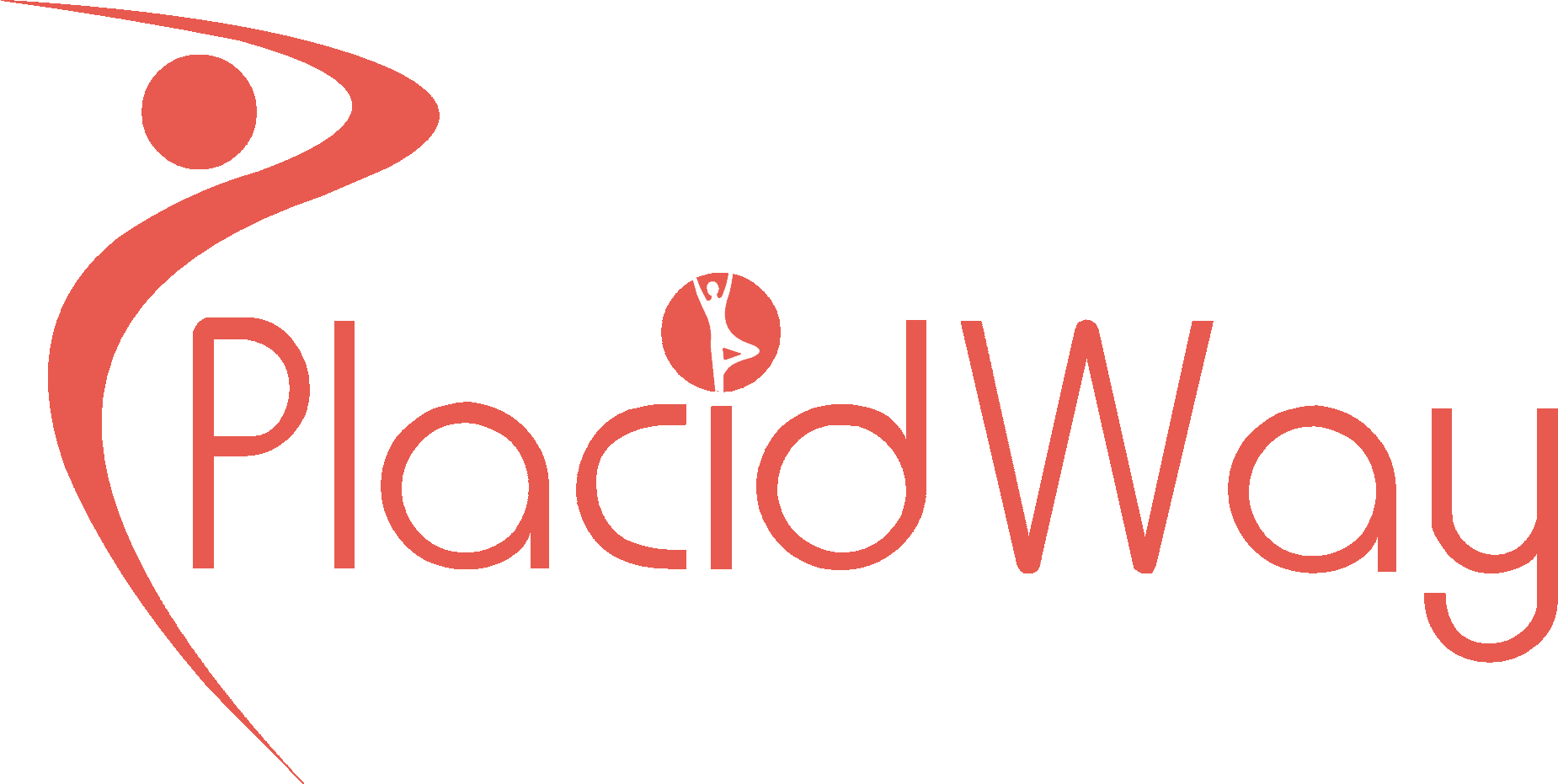
.png)




.png)

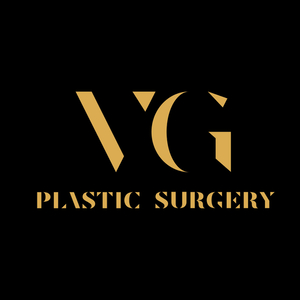
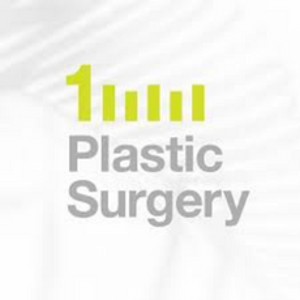





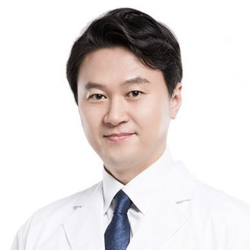
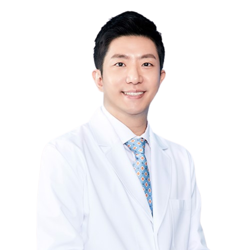

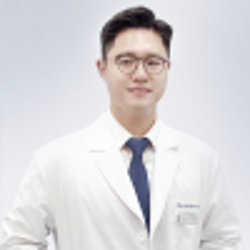



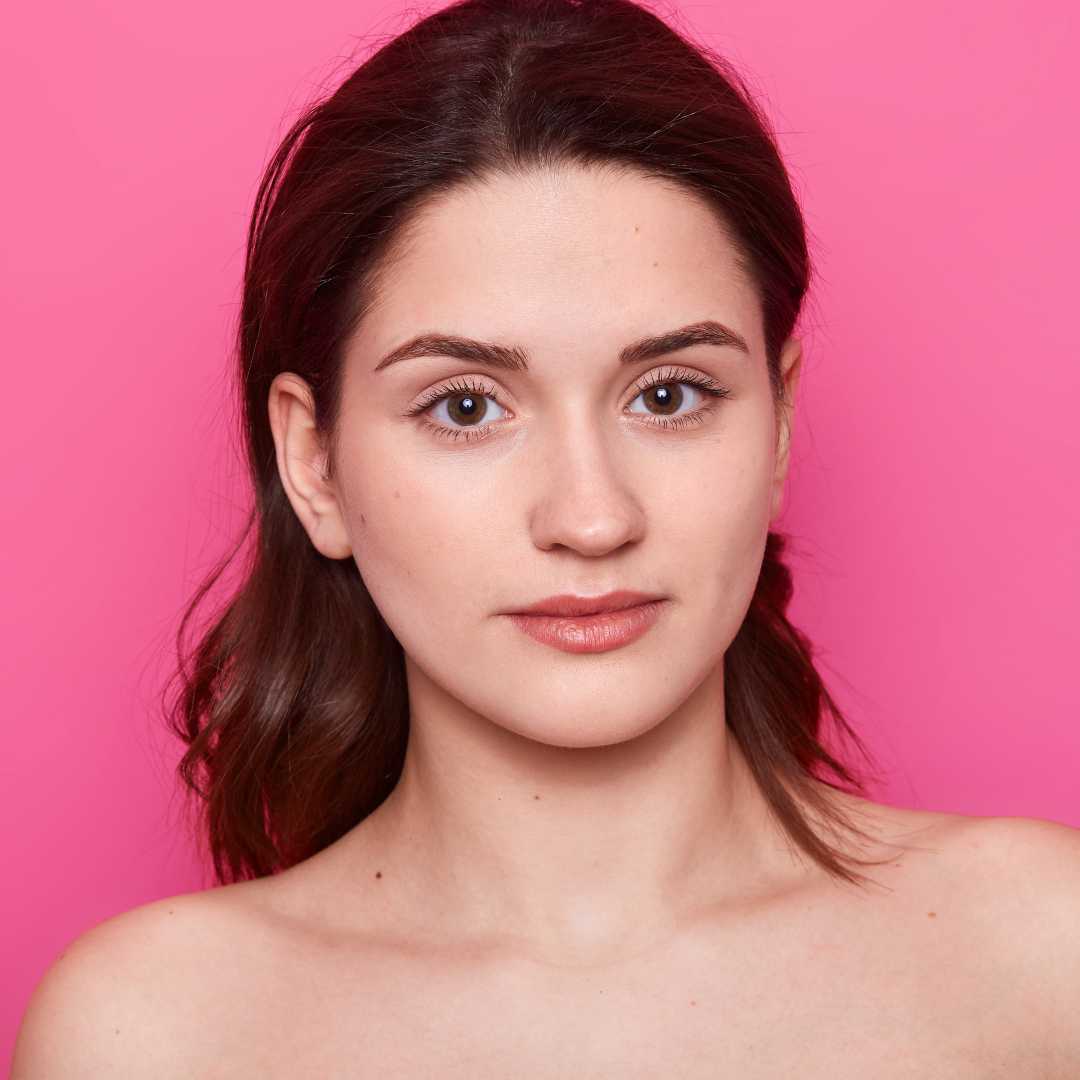


.png)



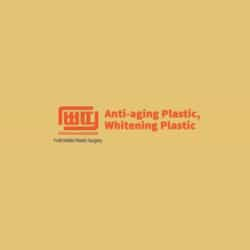

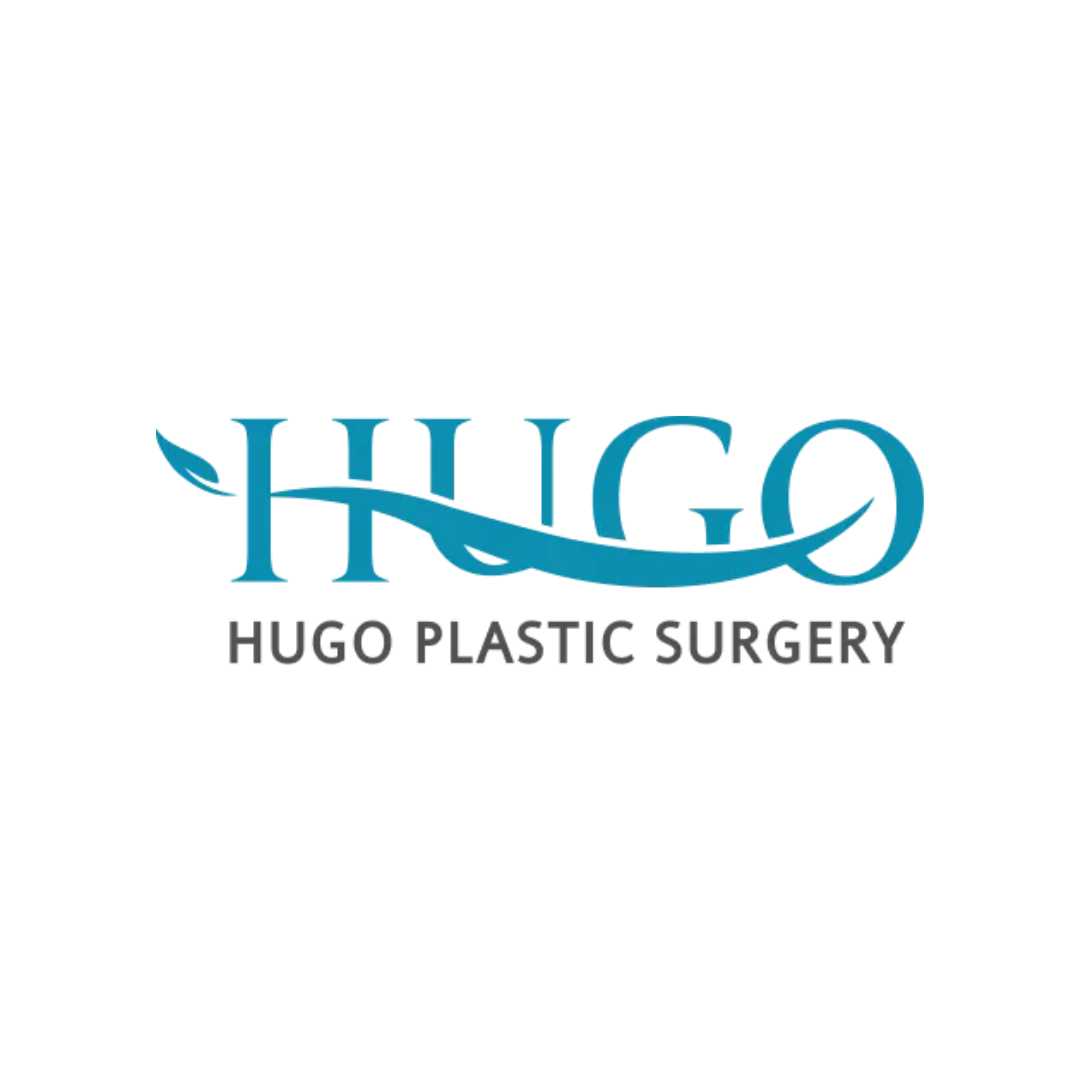
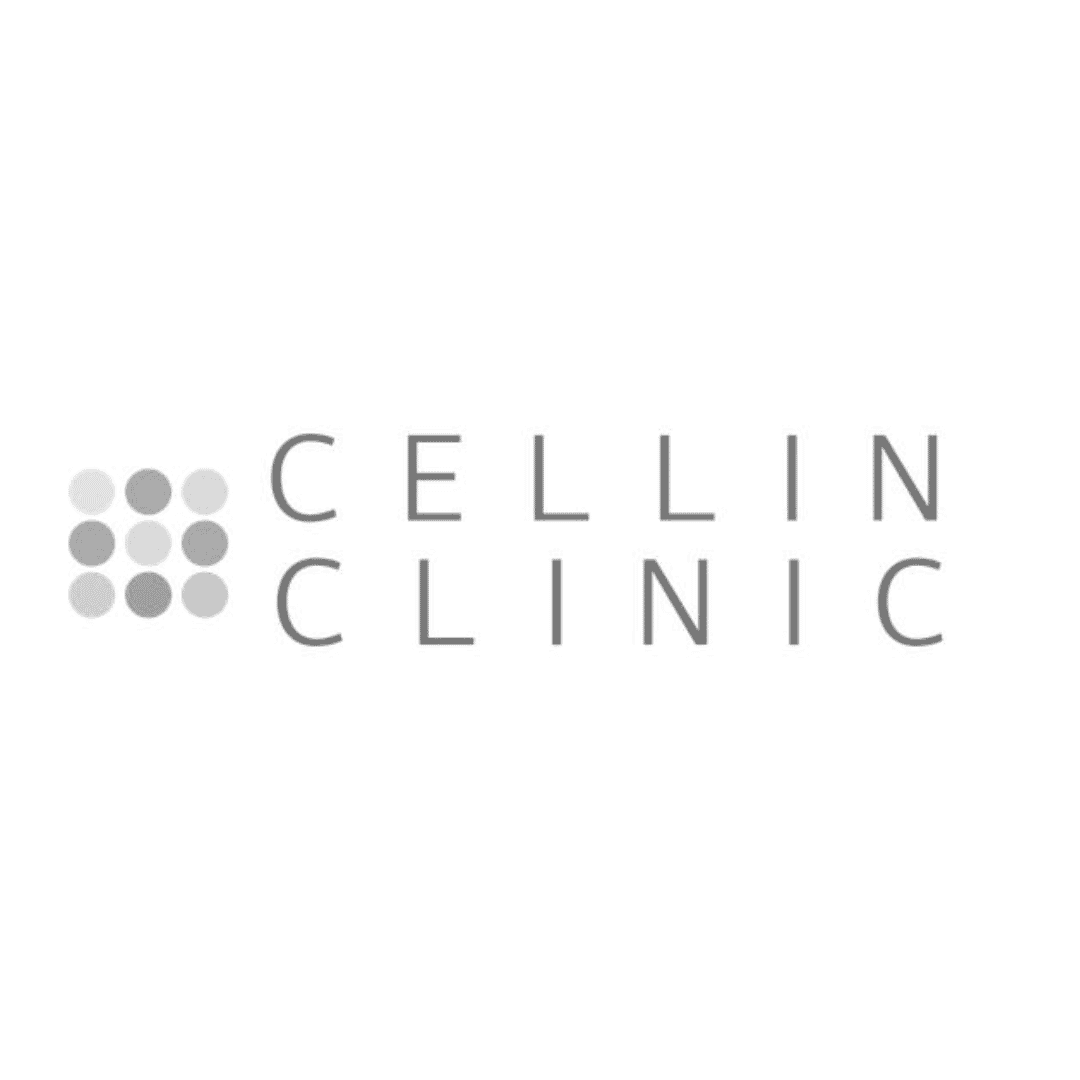


Share this listing